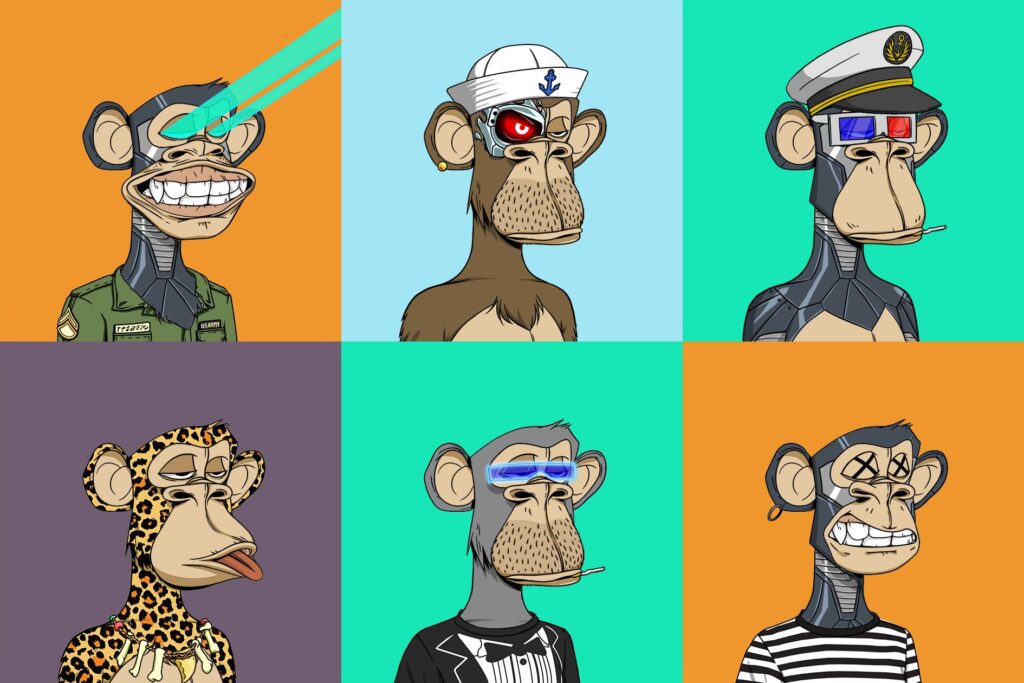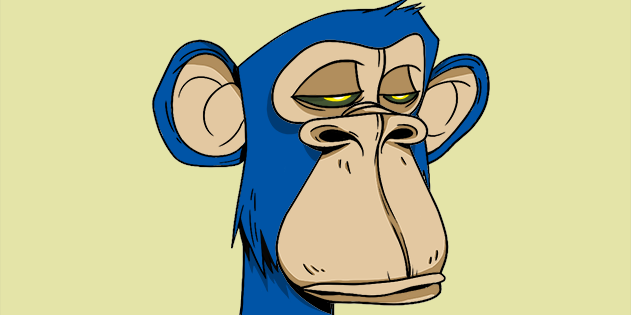It has nothing to do with art. It’s a gimmick, plain and simple.
IN 2019, THE Italian craftsman Maurizio Cattelan channel taped a banana from a nearby general store to an exhibition divider at Miami’s Art Basel celebration. He called it Comedian and sold it for $120,000. The purchasers didn’t have to stress over the banana decaying, on the grounds that it was excluded from the buy. What they had truly paid for was an endorsement of realness, which remembered directions for the right point and tallness at which to attach organic product to a divider.
Since Cattelan’s victory in South Florida, Miami has formed itself into a hatchery for an alternate sort of gimmicky workmanship. The city is presently a crypto focal point, with a his chairman check in bitcoin. It’s likewise the origination of the Bored Ape Yacht Club, an assortment of non-fungible tokens, or NFTs, sent off by a startup called Yuga Labs in spring 2021. Each NFT relates to an animation primate altered with extraordinary shading plans, looks, and outfits. (One gorilla, for instance, is brown, clean-cut, wearing shades; another is panther print, with a rainbow-hued barbecue in its smiling mouth.) In its underlying run, the BAYC made around $2 million. From that point, costs went up. Sales management firm Sotheby’s as of late sold a bunch of 107 chimps for more than $24 million. Gwyneth Paltrow, Eminem, Shaquille O’Neal, Post Malone, Snoop Dogg, Mark Cuban, and Steph Curry have a place with a developing gathering of big name promoters. During a new Tonight Show talk with, Jimmy Fallon and Paris Hilton advertised chimp proprietorship in a discussion with the solid, lively rhythm of an awful infomercial. Among them, they’d paid all the more a large portion of 1,000,000 dollars to join the club.
The Fallon-Hilton chimp portion circulated around the web, powered by individuals ridiculing how unpleasant it was. As NFTs go standard, they proceed to spurn and goad their faultfinders, who have a few convincing motivations to detest them. First off, most of these tokens are exchanged on the Ethereum blockchain, which utilizes an enormous measure of energy; trading NFTs can make private-streaming all over the planet to get Picassos look emphatically green in examination. The significant commercial centers are additionally overflowing with misrepresentation, with one driving business sector as of late conceding that in excess of 80% of the NFTs printed utilizing its free choice were spam, fakes, or copied work. However, even “genuine” NFT activities can smell like staggered showcasing, as authorities push others to get in on the activity with the vexing intensity of a previously typical associate presently unendingly advancing oils on Instagram. All things considered, the best way to get rich off an authentication of validness for an advanced picture of a chimp is to pay it off you for much more than you paid. Then, at that point, obviously, there’s another striking evaluate, which reduces to this: They look moronic.

Required admonition: Yes, indeed, the NFT commercial center is immense, and there are a few outwardly fascinating tasks acquiring footing in the midst of the silly animation creatures. Yet, there is a thick string interfacing a large number of the most notable NFTs, from Beeple’s grotesques to cutesy CryptoKitties to the Bored Ape Yacht Club. Regardless of anything else, they’re gimmicky.
How treats mean to be gimmicky? “Our very idea of a trick infers mindfulness that, in private enterprise, misprized things are traded continually,” social scholar Sianne Ngai writes in her 2020 book Theory of the Gimmick. She applies the mark to a wide range of tricks, from a kitchen doohickey sold on late-night TV to a too-ostentatious account gadget in a brief tale. For Ngai, contrivances aren’t in every case only repellant; she accepts underhanded moves can be pleasant whenever executed with panache. (By her assessment, Henry James is a contrivance ace in his later fiction.) A charming trick entertains however much it frustrates. The undesirable kind? Ngai noticed how regularly we track down tricks “humorously disturbing” assuming that they’ve figured out how to dupe others regardless of their extremely clear overvaluation.
Two of the organizers of the Bored Ape Yacht Club are self-depicted “abstract brothers” who go by the nom de plumes and “Gordon Goner.” One has a MFA, the other exited. They told The New Yorker they had at first reinforced by quarreling over crafted by David Foster Wallace; in a meeting with cryptographic money news site Coindesk, they evoked Austrian-British savant Ludwig Wittgenstein’s concept of the unutterable to depict their primates. Along these lines, essentially, they’re by and large the kind of folks who may get a duplicate of Theory of the Gimmick. What’s more they’ve obviously pulled a trick off. The gorillas are producing in excess of a billion dollars (indeed, billion) in deals, they’ve drawn in a possible speculation from Andreessen Horowitz, they’re on the front of magazines, they have an association with Adidas. And keeping in mind that many reports on the social peculiarity of the Bored Ape Yacht Club attempt to save the imaginative value of its pictures while examining its direction, its absence of creative legitimacy matters. There are a lot of noticeable workmanship pieces that fall unequivocally inside Ngai’s concept of the contrivance, from the urinal Marcel Duchamp submitted to the Society of Independent Artists in 1917 to Andres Serrano’s 1987 photo “Piss Christ” to, all the more as of late, a lot of Maurizio Cattelan’s work.

Cattelan’s divider banana was unpalatable, however it was important for an absurdist creative heredity, a kid about craftsmanship and business. Furthermore, it was an interesting joke! The Bored Ape Yacht Club, conversely, is a grimmer sort of contrivance, one that doesn’t spoof anything. It utilizes authentications of realness, as well, yet with a significant contrast in expectation. The authentication focuses back to a product, not a thought. It doesn’t taunt or even inquiry the workmanship world; rather it just capitalizes on it. The undertaking’s comical inclination is much the same as a decal of Calvin from Calvin and Hobbes taking a piss. The roughness is the point. Each primate is a misprized thing, traded continually.






























